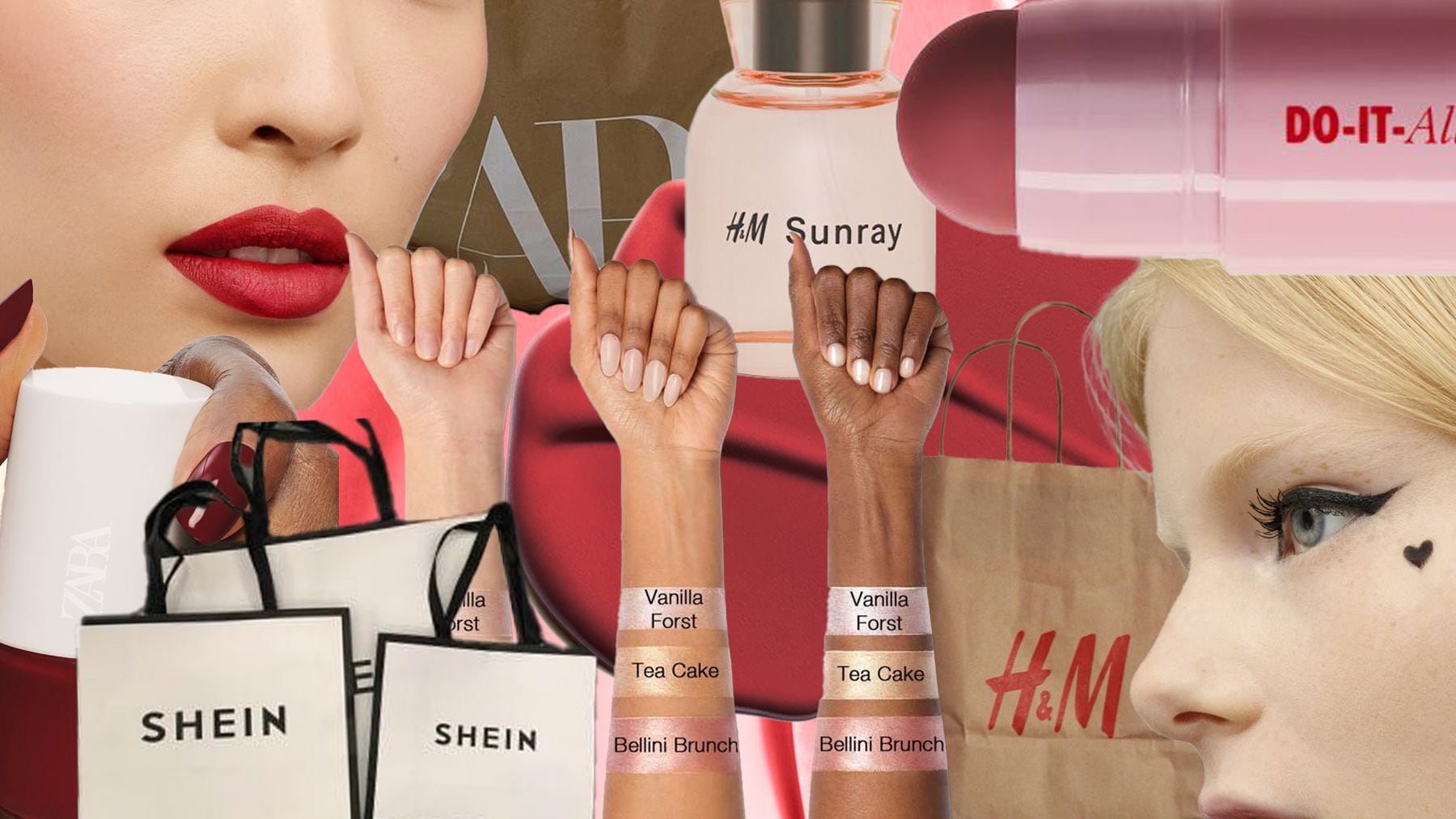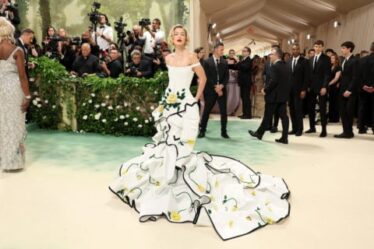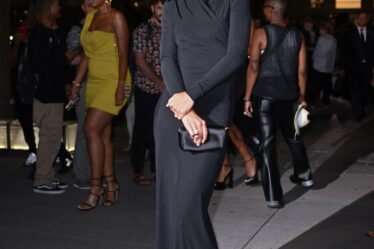
When Austin, Texas-based beauty YouTuber Angelica Nyqvist makes a video about a new brand, she usually gets flooded with requests and questions: “Can you do another look?” “Can you try it again?” “Can you use another product?”
But after posting a video about H&M’s newly-revamped beauty line in December, where she demonstrated the brand’s eyebrow pencils, eye shadows, bronzers, mascara and lipstick, the comments were unusually quiet.
“Not a single person has asked me for an update on that video,” said Nyqvist.
The response is indicative of the general apathy that has historically surrounded fast fashion’s beauty offerings, save a few hits, like Zara’s TikTok-favourite fragrances. That hasn’t stopped them from trying. In November, Zara announced it had tapped celebrity stylist Guido Palau as partner for its first hair care line, with a greater expansion planned for this year. Last year, H&M launched Gen-Z body care label Ohh! in April, opened its first beauty-only store in Norway in May and released a line with former Valentino makeup artist Raoúl Alejandre in September. This year, the retailer plans to open more beauty stores in Sweden (even as it culls its overall store fleet) as well as expand its makeup assortment and launch new fragrances, Cathrine Wigzell, managing director for H&M Beauty told BoF in an email. Meanwhile, ultra fast-fashion giant Shein, which debuted its expansive SheGlam line inclusive of $5 blushes, $3 eyeliners and $10 eye shadow palettes in 2019, is looking to expand its offering in 2024, a spokesperson for the retailer told BoF.
Fast fashion may find friendlier market circumstances today. Mass beauty has seen momentum over the past few years, with brands like E.l.f., Essence and Nyx Professional Makeup charting growth post-pandemic. In 2023, Shein saw its own beauty sales grow over 30 percent over the prior year. Walgreens and Walmart mainstay CeraVe has been on a hot streak since mid-pandemic.
In the crowded beauty space — where consumers already have plenty of options in both brands and retailers — it’s not enough to just put out a decent product at an affordable price. Fast fashion retailers face a lack of consumer awareness in beauty at best and scepticism around product efficacy and safety at worst. If fast fashion can crack beauty, however, it could present a new revenue stream for businesses that are grappling with slowing sales and rising competition.
“It’s getting harder to compete on apparel … It makes sense to have other engines that can drive growth,” said Manola Soler, senior director in consumer and retail at consulting firm Alvarez & Marsal.
Old Habits Die Hard
Fast fashion purveyors first hooked consumers by selling on-trend clothing at affordable prices. But in beauty, price isn’t as strong a differentiating factor.
Even at its most premium, beauty is considered an accessible splurge — a Hermés lipstick, for example, is $78, while a Birkin bag will run you at least $10,000. On the mass end, there’s already plenty of labels with ultra-low prices.
“There’s not really any gaps in the market in terms of pricing. It’s ‘choose your own adventure’ in beauty,” said Katie Thomas, Kearney Consumer Institute lead.
When it comes to shopping destinations, beauty customers are set in their ways: department stores for high-end purchases, Sephora and Ulta Beauty for buzzy brands and Target, Walmart and drug stores for mass-market lines. In those environments, shoppers can easily compare prices between brands right in-store; fast fashion retailers usually only carry their own lines. (Though in some European countries, H&M Beauty stocks external brands including The Ordinary, Dr Jart and Smashbox.)
“Consumer behaviour is hard to change, and consumers are very much in the rhythm of how they shop for beauty,” said Thomas. “From a consumer perspective, rationally, why would I get my beauty there instead of Ulta or Sephora?”
On the bright side, she said, beauty as an industry is open to disruption. Challenger brands can quickly become mainstays, and shoppers have taken to new habits, like buying online, she said.
Cultivating and pushing a sense of brand is especially important for players at the higher end of the fast fashion market, like Zara and H&M, who face increasing pressure from upstarts like Shein, Temu and Primark on pricing and speed. Additionally, many shoppers see beauty only at check out instead of displayed in high trafficked areas like the front of store at Sephora with its namesake line Sephora Collection. Appearance in-store, from keeping displays neat to figuring out where to put them, is costly, especially across a vast network of locations.
Giving Shoppers What They Want
Because consumers have a number of options for where to shop for beauty, retailers need to give them a specific reason to come in as well as compelling impulse buys, like an edgy lip colour to match their new going-out top. Most importantly, products need to fit a retailer’s image.
Topshop’s now-defunct beauty line, with bright lipsticks and dual chrome eyeshadows, is an example of fast fashion beauty done right, said Rose Gallagher, a UK-based makeup artist and beauty influencer.
“They made makeup that was trend-led and lent itself to the vibe of what they were selling,” said Gallagher. “Topshop tried to level up your outfit and that’s why it worked.”
Zara’s first full beauty range, including eyeshadow blush and foundation in over 130 colours, emphasised “clean,” at launch in 2021 and featured images by fashion photographers Steven Meisel and Mario Sorrenti. Today, its roll out of its first hair products — a gold mist and gel — focus more on play and user friendliness with a campaign video featuring chit-chat between Kaia Gerber and Palau as he works the shimmer through her hair.
While trendiness represents a big opportunity, it’s also a challenge: beauty is hard to churn out fast.
“You want to go fast, but you want to be conscious of safety and testing requirements … In apparel, you can turn around a product very quickly; its immediate gratification from the runway. With beauty, the development cycle is much longer,” said Soler. Beauty can take months to make, compared to just a few weeks for clothes. “And consumers are fickle.”
If retailers want consumers to buy into beauty in a big way, they’ll have to do more storytelling around products, both in-store or online, said Gallagher. Including, said Nyqvist, investing more in influencer marketing and growing awareness online beyond famous faces like Gerber.
“Most people don’t buy something off a single review. They want to see five people talking about a product and then they’ll be convinced,” said Nyqvist.
There’s also an opportunity for fast fashion to hop on the dupe craze in beauty, as the positioning aligns with how many consumers already think about fast fashion’s apparel offerings. Zara’s fragrances have gone viral on TikTok as $15 alternatives to luxury scents including Maison Francis Kurkdjian’s Baccarat Rouge and YSL’s Black Opium, which retail for around $325 and $130, respectively.
Doing dupes intentionally is difficult: it’s hard to anticipate what’s going to blow up or get users to praise a particular product. But the attitudes driving dupe obsession — including a desire to find and share a good deal that shows savvy and awareness — could boost retailers’ beauty efforts.
“[Retailers] should lean on their creative directors, on their resources and on the trailblazers. We want access to those people,” said Gallagher. “People are more informed about beauty in general, those kinds of collabs are landing differently now.”
It’s hard to tell what the extent of fast fashion’s beauty ambitions are, and success depends on how much retailers dedicate to the category.
“They’re stretching into adjacent categories and just kind of testing the waters,” said Soler. “I think it’s more of a basket-completer to service the consumer holistically and strengthen the core brand.”



